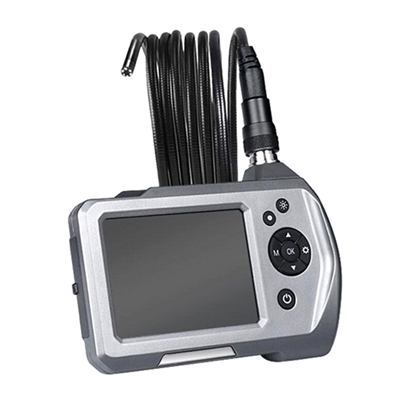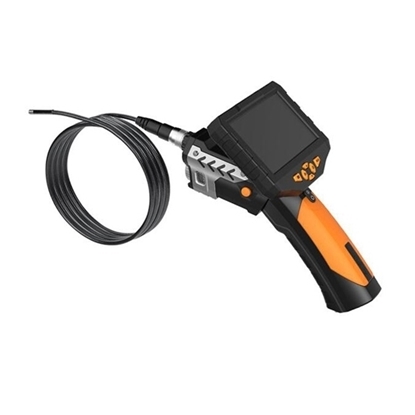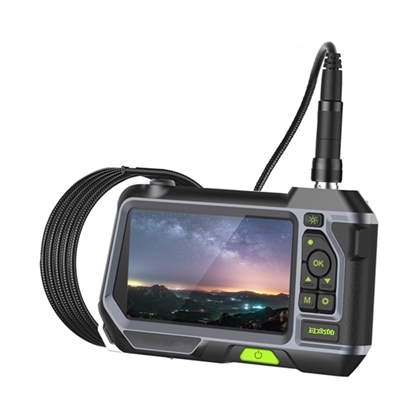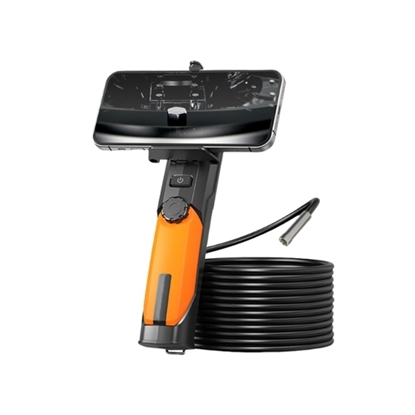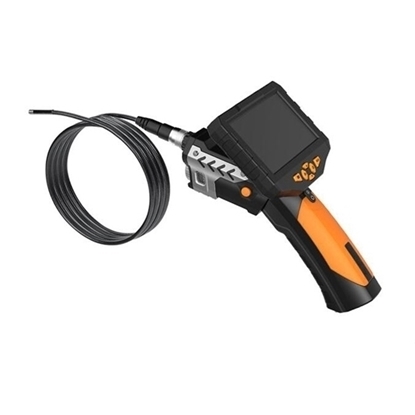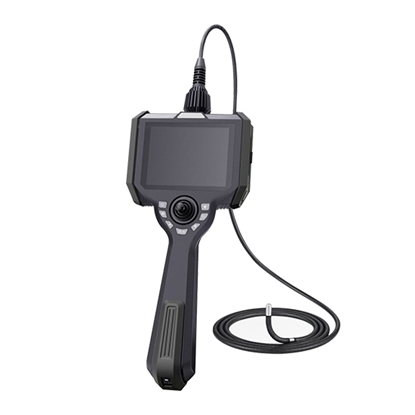Endoscope
Industrial Endoscope, 3.5" LCD, 1.0MP, 5.5mm Dia.
Industrial Endoscope, 4.3" LCD, 5.5mm Probe, 720P
Industrial Endoscope, 5" LCD, 5.5mm Dual Lens, 2.0MP
Wireless WiFi Endoscope for iPhone/Android
Industrial Endoscope, 5" LCD, 5.5mm Probe, 1080P
Industrial Endoscope for Android/Iphone, 6mm Probe, 360 Degree
Industrial Endoscope, 5.7" LCD, UV Light Inspection Camera
Endoscopes (sometimes called borescope or endoscope camera) are used for visual inspection work where the area to be inspected is inaccessible by other means, or where accessibility may require destructive, time consuming and/or expensive dismounting activities. Endoscope cameras are mostly used in nondestructive testing techniques for recognizing defects or imperfections.
ATO.com provides you high-end and low price waterproof industrial endoscope (borescope) and wireless WiFi endoscope. It offers high-definition photo and video recording for clear internal part inspection. Portable endoscope widely used to pipeline maintenance, air-conditioning inspection, sewer detection, toilet clog, vehicle maintenance, vent pipe, machine equipment, engine, automotive, parts assembly, etc.
How to Select Industrial Endoscope?
There are many kinds of industrial endoscope, we should choose endoscope with different functions in different circumstances. So how to choose the suitable endoscope? Here are some tips that hope can help you.
- The reflectivity of light. For the surface of dark objects coated with paint, it has poor reflectivity of light. Therefore, the industrial endoscope needs stronger lighting performance to get the best image of inspected objects.
- The size of the object entrance. Check the size of the object entrance and judge if it limits the size of borescope mirror tube diameter (or working diameter).
- Approach path of the inspection point. If the approach path of the inspection point is straight, the rigid endoscope is more suitable for inspection. If the approach path of the inspection point is winding, the flexible endoscope or electronic image endoscope should be chosen.
- The position of the object entrance. The objection lens of borescope must be close to the position of the inspection point to carry out the inspection work. The position of the object entrance will decide the observation direction of endoscope, approach path and the choice of cable length.
- Distance between the objection lens and the inspected object. Whatever using standard or high strength light sources, distance between the objection lens and the inspected object will direct influence the demand of lighting.
- Defects size. Different defects of the inspected object have different sizes, such as a slight crack likes hair and a large damage crack. The size of defects is important reference factors to choose the magnification, visual angle, focusing and lens resolution, which gets the appropriate and clear defect image.
- Outline of the inspected object. Outline of the inspected object is one of an important factors to determine the visual angle and light source, including the object itself, cracks, and deformation parts. Inspected in the pipeline, the environment is darkness and insufficient light.
Industrial Endoscope Troubleshooting:
Endoscopes have a wide range of applications. In addition to learning how to use an endoscope, it is more important to know what to do when an endoscope goes wrong. The points listed below are common problems with endoscopes.

- Image optical resolution is reduced and image blur. There are many reasons for the decrease of optical resolution in industrial endoscope, such as dirty optical components, scratches on the surface of the distal/ proximal lens, cracks in the optical channel, and fracture of the fiber image beam.
- Field of view size is changed. The field of view of a endoscope is determined by the Angle between the left and right of the image at its apex, which controls the circumference of the image displayed on the field monitor. Once the field size changes, images that should be displayed will be offset or not displayed. The general reasons for this situation are: the eyepiece is damaged; video adapter fault; CCD system changes, etc.
- Image transmission distortion or halo phenomenon. Generally speaking, the image in the process of transmission, fiber optic fiber photography and lens system aperture size has a great relationship, once the transmission process of a link problems, will cause image distortion or edge blur, dim, and halo phenomenon. At this time, if the brightness of the light source is increased, the edge of the field of vision can be clearly seen, but the central part will become too bright and dazzling, which is mostly caused by the failure of the lens in the industrial endoscope.
How Does Industrial Endoscope Work?
We need to know how many components industrial endoscope has. The industrial endoscope is composed of cold light source, optical fiber tube and fiber optic endoscope. The cold light source consists of a transformer, a pressure regulating device, a cooling fan, a metal iodine tungsten lamp, a mirror coated with a cold light material and a group of lenses. When the power is switched on, the metal iodine tungsten lamp is on, and its luminous intensity can be adjusted through the voltage regulating device. The cold light reflector reflects the cold light onto a set of lenses. After focusing by the lens, the light reaches the light guide hole.
 A rigid endoscope usually consists of an objective lens, a rotating lens, a guiding beam, an eyepiece, and a stainless steel tube. The working principle is: the image is transmitted by the optical system of the lens inserted in the stainless steel tube, and the optical fiber provides the light transmission lighting, and the built-in optical fiber directly transmits the photographic light from the independent cold light source to the working position.
A rigid endoscope usually consists of an objective lens, a rotating lens, a guiding beam, an eyepiece, and a stainless steel tube. The working principle is: the image is transmitted by the optical system of the lens inserted in the stainless steel tube, and the optical fiber provides the light transmission lighting, and the built-in optical fiber directly transmits the photographic light from the independent cold light source to the working position.
Fiber endoscope is usually composed of an insertion part, an operation part and an eyepiece part. The insertion part can be bent, including an objective lens and an image guide beam. The working principle is: the image is transmitted by high-quality image fiber, which can be directly observed through the eyepiece. The image fiber bundle, optical fiber and steel wire for adjusting the angle of the front swing head are all built in, and also equipped with special cold light source.

